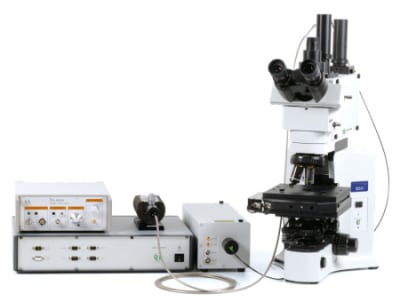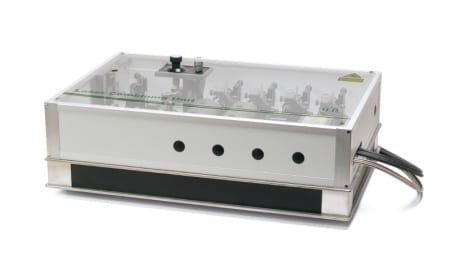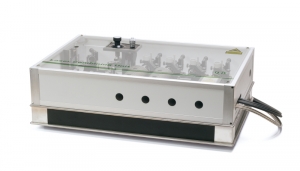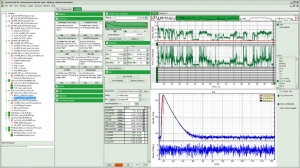


Upright Time-resolved Fluorescence Microscope
PicoQuant Upright Time-resovled Fluorescence Microscope – MicroTime 100
The MicroTime 100 is an idea tool for the study of time-resolved photoluminescence of solid samples such as wafers, semiconductors or solar cells. The system is based on a conventional upright microscope body that permits easy access to a wide range of sample shapes and sizes. The MicroTime 100 can be supplied with either manual scanning or with a 2D piezo scanner with either µm or cm resolution.


Based on the sophisticated data collection and handling, the system softwareSymPhoTime 64 supports a multitude of methods, such as intensity time trace, burst analysis, lifetime histogramming, Fluorescence Correlation Spectroscopy (FCS),Fluorescence Lifetime Correlation Spectroscopy (FLCS), Fluorescence Lifetime Imaging (FLIM), TRPL Imaging and Förster Resonance Energy Transfer (FRET), to name only a few.
SymPhoTime 64 data handling maintains a transparent data structure where all derived data is maintained in one workspace, including a log file to keep track of all measurement and analysis steps.
A large number of algorithms for those methods are already integrated in SymPhoTime 64, providing a analysis platform for ready-to-publish data. At the same time, SymPhoTime 64 offers enhanced flexibility for the integration of novel, cutting edge algorithms by the user. A dedicated scripting language interface allows to modify and expand the analysis routines. In addition to data analysis within SymPhoTime 64, data can be exported to standard formats for external analysis.
Our interactive user forum as well as regularly held SymPhoTime training days offer outstanding support for new and advanced users.

| Excitation system |
|
| Microscope |
|
| Objectives |
|
| Scanning |
|
| Main optical unit |
|
| Detectors |
|
| Data acquisition |
|
| Software |
|